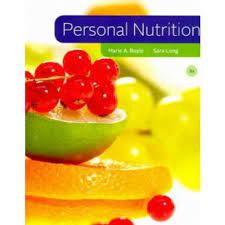Test Bank For Nutrition Ecology and Behavior 8Th Edition By Pete Anderson
Original price was: $75.00.$24.00Current price is: $24.00.
Test Bank For Nutrition Concepts And Controversies MyPlate Update 12th Edition By Frances Sizer is one of the most popular Test Banks for students studying nutrition. Test Bank For Nutrition Concepts And Controversies MyPlate Update 12th Edition By Frances Sizer covers all the key topics in nutrition, including the nutrients required for good health, the role of diet in disease prevention, and the controversies surrounding fad diets and food additives.
Test Bank For Nutrition Concepts And Controversies MyPlate Update 12th Edition By Frances Sizer is an essential resource for any student who wants to succeed in their nutrition course. Test Bank For Nutrition Concepts And Controversies MyPlate Update 12th Edition By Frances Sizer is available now. Order your copy today!
Digital item No Waiting Time Instant Download
Description
Test Bank For Nutrition Ecology and Behavior 8Th Edition By Pete Anderson
Chapter 02
Designing a Healthy Dietary Pattern
Multiple Choice Questions
|
1. |
The RDAs for nutrients are set A. to cover the needs of 97% – 98% of the population. B. based on the dietary intakes of people who appear to be maintaining nutritional health. C. by the FDA for food labeling purposes. D. based on a person’s height and weight.
|
|
2. |
Which of the following is true about the way we should eat to achieve good nutritional status? A. Eat fruits and vegetables because we can get all the nutrients we need from these. B. Do the best we can but take supplements to fill in the deficient areas. C. Eat a wide variety of foods because no single natural food meets all human nutrient needs. D. Eat only plant products because animal products are bad and generally filled with hormones for animal growth. |
|
3. |
Which meal contains foods from all food groups represented in MyPlate? A. Chef’s salad containing ham, lettuce, an egg, Thousand Island dressing, and croutons; bagel; apple; and soft drink B. Steak, baked potato with margarine, broccoli, salad with oil and vinegar dressing, milk C. Refried beans, onions, tomatoes, and cheddar cheese wrapped in a tortilla; orange; and water D. Pasta, marinara (tomato) sauce with clams, house salad with vegetables, Italian bread with butter, and wine |
|
4. |
Which statement best describes the healthful diet principle of moderation? A. Choose a number of different foods within any given food group rather than the “same old thing.” B. Consume a variety of foods from MyPlate’s five major food groups every day. C. Pay attention to portion size and plan your entire day’s diet so that you don’t overconsume nutrient sources. D. Consume foods that have the most nutrition for their kilocalories. |
|
5. |
Which of the following behaviors exemplifies the concept of dietary moderation? A. Eat only unprocessed plant products. B. Choose several different foods from each food group throughout the day. C. Eat only “good” foods such as fruits and vegetables and avoid the “bad” foods such as steak and ice cream. D. If breakfast was high in fat and sodium, plan to eat something relatively low in fat and sodium for dinner. |
|
6. |
Which statement best describes nutrient density? A. Choose a number of different foods within any given food group rather than the “same old thing.” B. Consume a variety of foods from MyPlate’s five major food groups every day. C. Plan your entire day’s diet so that you don’t overconsume nutrient sources. D. Consume foods that have the most nutrients when compared to their kilocalories. |
|
7. |
Measurements of height, weight, body circumferences, and body fat are called A. sonography. B. electrocardiography. C. radiography. D. anthropometry. |
|
8. |
Which of the following is not a way to assess nutritional status? A. Dietary assessment B. Biochemical tests C. Clinical evaluation D. Psychoanalysis |
|
9. |
The acronym RDA stands for A. Recommended Dietary Allowance. B. Recommended Daily Allowance. C. Required Dietary Allowance. D. Required Daily Allowance. |
|
10. |
Which term describes failing health that results from a long-standing dietary intake that is inadequate to meet nutritional needs? A. Desirable nutrition B. Balanced nutrition C. Undernutrition D. Inferior nutrition |
|
11. |
The RDAs are considered to be adequate to meet the known nutritional needs of A. all persons except the very young and very old. B. all persons except pregnant and lactating women. C. nearly all healthy persons. D. all persons diseased and healthy. |
|
12. |
The RDAs for nutrients generally are A. the minimum amounts the average adult male requires. B. more than twice the actual requirements. C. designed to prevent deficiency disease in half the population. D. designed to be adequate for almost all healthy people. |
|
13. |
The RDA for iron is 18 milligrams per day. Tina usually consumes about 15 milligrams of iron per day. She is a healthy young woman with no condition that significantly increases her needs for iron. Which of the following statements is true about her consumption of this nutrient? A. She is likely to be deficient in iron. B. She will need to consume significantly more iron, above the RDA, to make up for her intake. C. Only if her intake is consistently less than 70% of the RDA would she be at great risk of nutritional deficiency. D. She couldn’t possibly be getting enough iron for her needs. |
|
14. |
Adequate Intakes (AI) A. are established for nutrients for which there is not enough information to set RDAs. B. are established for carbohydrate, total fat, and dietary fiber. C. represent minimum nutrient needs. D. are established for all vitamins and minerals. |





Be the first to review “Test Bank For Nutrition Ecology and Behavior 8Th Edition By Pete Anderson”